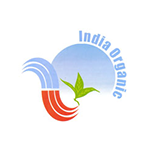The mango, often hailed as the ‘king of fruits,’ holds a special place in the hearts and kitchens of many cultures across the globe. This tropical fruit, with its succulent sweetness and vibrant colour, has woven itself into the culinary and cultural fabrics of numerous countries. From the bustling markets of India to the serene orchards of Mexico, let’s explore the rich traditions and customs surrounding the beloved mango.
India: The Epicentre of Mango Culture
In India, the mango is more than just a fruit; it is a symbol of love, prosperity, and good fortune. The country’s love affair with mangoes dates back over 4,000 years, with ancient texts and folklore celebrating its divine taste. During the summer months, mango festivals, or “Aam Mahotsav,” are held across various states, showcasing an array of mango varieties. Alphonso, Dasheri, and Langra are just a few of the prized cultivars savoured during these festivities.
Mangoes also play a pivotal role in Indian cuisine. They are used in everything from chutneys and pickles to lassis and curries. The famous Aamras, a sweetened mango pulp, is a traditional dish enjoyed with puris, especially in Gujarat and Maharashtra. Additionally, the mango leaf is considered auspicious and is often used in religious ceremonies and decorations.
Thailand: A Fusion of Flavours
In Thailand, mangoes are an integral part of the culinary landscape. The iconic dessert, Mango Sticky Rice (Khao Niew Mamuang), is a delightful combination of ripe mango slices, sweet sticky rice, and coconut milk. This dish, with its harmonious blend of flavours and textures, is a staple at festivals and celebrations, especially during the Thai New Year, Songkran.
Thai cuisine also features green mangoes, which are commonly used in savoury dishes. Som Tum Mamuang, a spicy green mango salad, is a popular street food that tantalises the taste buds with its tangy, spicy, and slightly sweet profile. The versatility of mangoes in Thai cooking highlights the fruit’s ability to complement both sweet and savoury dishes.
Mexico: Mangoes in the New World
Mexico, one of the largest producers of mangoes, has a vibrant mango culture that is deeply rooted in its history and cuisine. The Ataulfo mango, known for its creamy texture and honey-sweet flavour, is a Mexican favourite. During the peak season, mangoes are sold in abundance at local markets, often enjoyed fresh or with a sprinkle of chilli powder and lime juice.
In Mexican cuisine, mangoes are used in salsas, smoothies, and desserts. Mango chamoyadas, a frozen treat made with mango, lime, and chamoy sauce, are particularly popular on hot summer days. This tangy and spicy snack reflects the Mexican penchant for bold and contrasting flavours.
Philippines: Mangoes and Festivities
In the Philippines, mangoes are a source of national pride. The Carabao mango, also known as the Manila mango, is celebrated for its unparalleled sweetness. The annual Guimaras Mango Festival pays homage to this beloved fruit with parades, mango-eating contests, and various mango-based dishes.
Filipinos incorporate mangoes into numerous traditional dishes. Mango float, a no-bake dessert made with layers of graham crackers, whipped cream, and ripe mangoes, is a household favourite. Dried mangoes, a popular export, are enjoyed as a snack worldwide, showcasing the country’s rich mango heritage.
Africa: Mangoes Across the Continent
In Africa, mangoes are cherished in many countries, each bringing its unique touch to the fruit’s consumption. In Nigeria, mangoes are a common sight in markets and are enjoyed fresh or as part of local dishes. The mango season is eagerly anticipated, and the fruit is often used to make juices and smoothies, providing a refreshing escape from the tropical heat.
In East Africa, particularly in Kenya and Tanzania, mangoes are used in chutneys and pickles, adding a sweet and tangy element to meals. The fruit’s versatility is celebrated, whether it is eaten fresh, dried, or cooked into savoury dishes.
The mango’s journey from orchard to table transcends borders and cultures, making it a truly global fruit. Each country’s unique traditions and customs surrounding mangoes highlight the universal appeal and versatility of this beloved fruit. Whether enjoyed in a traditional Indian Aamras, a Thai Mango Sticky Rice, a Mexican chamoyada, a Filipino mango float, or an African mango chutney, the mango continues to captivate and connect people around the world.






